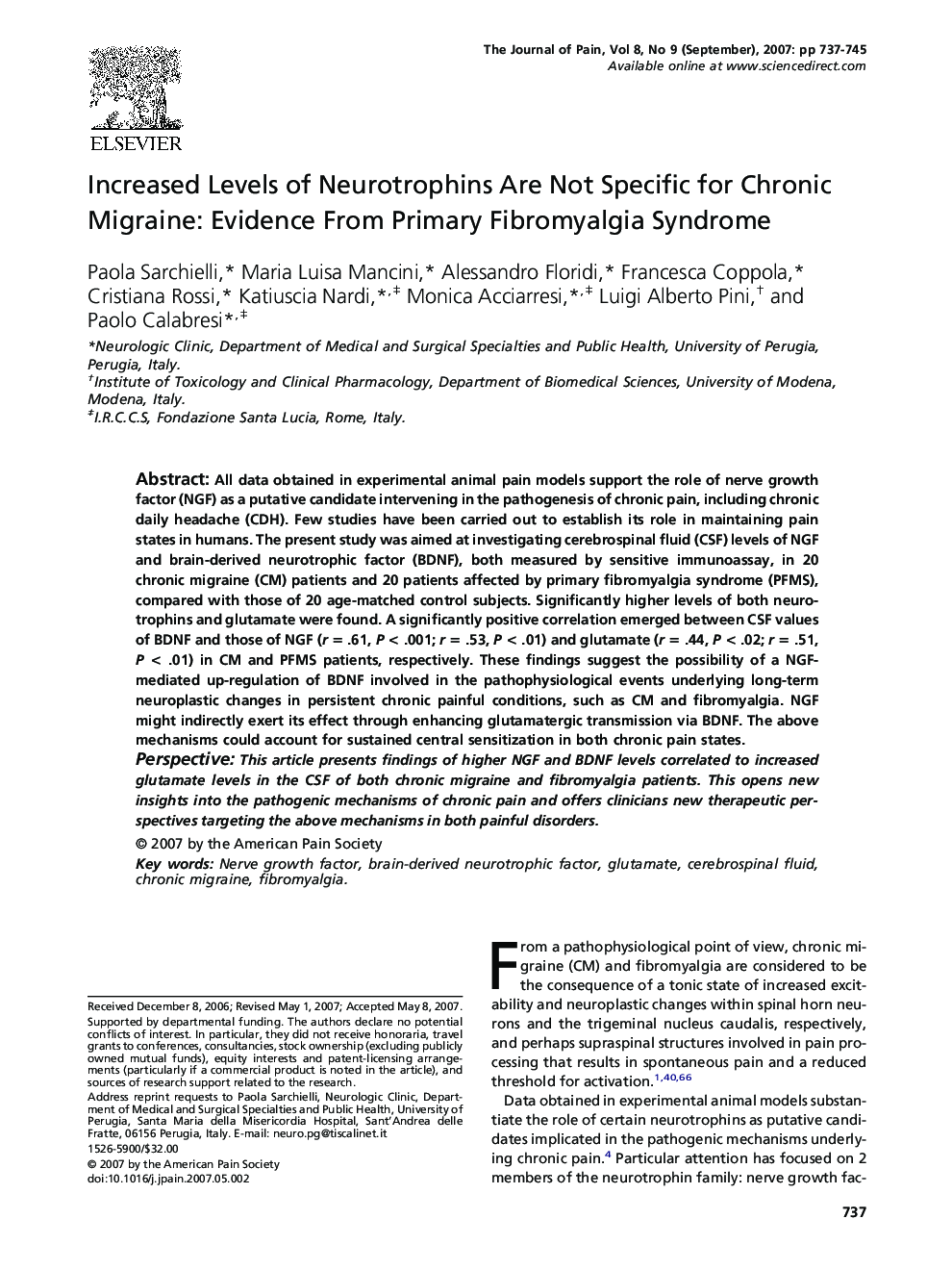| Article ID | Journal | Published Year | Pages | File Type |
|---|---|---|---|---|
| 2735170 | The Journal of Pain | 2007 | 9 Pages |
All data obtained in experimental animal pain models support the role of nerve growth factor (NGF) as a putative candidate intervening in the pathogenesis of chronic pain, including chronic daily headache (CDH). Few studies have been carried out to establish its role in maintaining pain states in humans. The present study was aimed at investigating cerebrospinal fluid (CSF) levels of NGF and brain-derived neurotrophic factor (BDNF), both measured by sensitive immunoassay, in 20 chronic migraine (CM) patients and 20 patients affected by primary fibromyalgia syndrome (PFMS), compared with those of 20 age-matched control subjects. Significantly higher levels of both neurotrophins and glutamate were found. A significantly positive correlation emerged between CSF values of BDNF and those of NGF (r = .61, P < .001; r = .53, P < .01) and glutamate (r = .44, P < .02; r = .51, P < .01) in CM and PFMS patients, respectively. These findings suggest the possibility of a NGF-mediated up-regulation of BDNF involved in the pathophysiological events underlying long-term neuroplastic changes in persistent chronic painful conditions, such as CM and fibromyalgia. NGF might indirectly exert its effect through enhancing glutamatergic transmission via BDNF. The above mechanisms could account for sustained central sensitization in both chronic pain states.PerspectiveThis article presents findings of higher NGF and BDNF levels correlated to increased glutamate levels in the CSF of both chronic migraine and fibromyalgia patients. This opens new insights into the pathogenic mechanisms of chronic pain and offers clinicians new therapeutic perspectives targeting the above mechanisms in both painful disorders.
